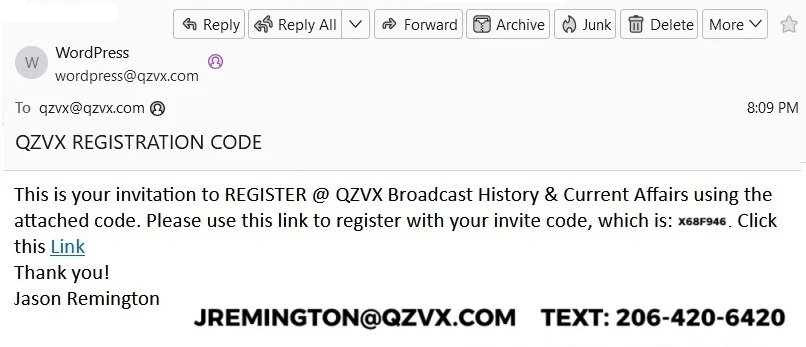You will be sent an INVITATION LINK to REGISTER once we receive your info.
You should receive an Email like this.
 (Check your SPAM or JUNK folder if your Email has been misrouted.)
(Check your SPAM or JUNK folder if your Email has been misrouted.)
You should receive an Email like this.
 (Check your SPAM or JUNK folder if your Email has been misrouted.)
(Check your SPAM or JUNK folder if your Email has been misrouted.) Copyright © 2025 QZVX Broadcast History & Current Affairs

Recent Comments